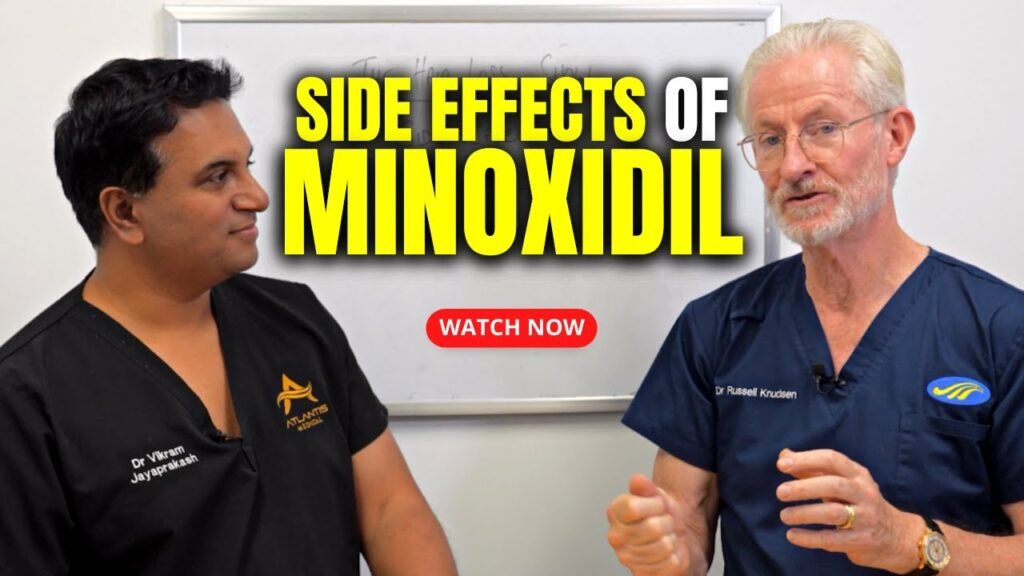Understanding Minoxidil and Its Uses
Minoxidil is a well-known topical medication primarily used for treating hair loss and promoting hair growth in individuals experiencing conditions such as androgenetic alopecia. Originally developed as an oral medication for high blood pressure, its potential for stimulating hair growth was discovered as a side effect, leading to the creation of topical formulations. Minoxidil works by revitalizing hair follicles and increasing the blood flow to the scalp, which in turn promotes the growth of thicker and longer hair strands.
How Minoxidil Works
The mechanism by which minoxidil encourages hair growth is not entirely understood, but it is believed to involve the dilation of blood vessels around hair follicles. This dilation enhances the delivery of oxygen and nutrients to the follicles, fostering an environment conducive to hair growth. Additionally, minoxidil may extend the anagen phase of the hair growth cycle, which is the active growth phase, thereby allowing hair to grow for a longer period before entering the resting phase. This action is particularly beneficial for individuals with pattern baldness, as it helps in increasing the density and thickness of hair.
Common Uses of Minoxidil
Minoxidil is most commonly used to treat male and female pattern baldness, which is a hereditary condition characterized by thinning hair and receding hairlines. It is available in various concentrations, typically 2% for women and 5% for men, and can be found in forms such as solutions, foams, or sprays. Regular application of minoxidil is essential for optimal results, and it may take several months of consistent use to observe noticeable improvements. While primarily used for scalp hair loss, some individuals also explore its use for enhancing eyebrow density or facial hair growth, although these applications are less common and should be approached with caution.
Common Side Effects of Minoxidil
Minoxidil, a popular treatment for hair loss, is generally considered safe, but it can cause some side effects in certain individuals. One of the most frequently reported side effects is scalp irritation. This can manifest as itching, redness, or a burning sensation where the solution is applied. For some, this irritation is mild and temporary, while others may experience more persistent discomfort. Its important to monitor these symptoms, as severe irritation could necessitate discontinuation of the product.
Another common side effect of Minoxidil is unwanted facial hair growth, particularly in women. This occurs because the medication can sometimes spread beyond the scalp or be absorbed into the bloodstream, affecting hair growth in other areas. While this is not harmful, it can be an undesirable cosmetic effect. To minimize this risk, its crucial to apply the product carefully and only to the affected areas of the scalp.
In addition to these effects, some users may experience changes in hair texture. This can include dry, brittle hair or even a change in hair color. While these side effects are not as common as scalp irritation or unwanted hair growth, they can still be bothersome for those using Minoxidil. If you notice significant changes in your hair texture or color, consulting with a healthcare provider can help determine the best course of action.
Identifying an Allergic Reaction to Minoxidil
When using minoxidil, a popular treatment for hair loss, its essential to be aware of potential allergic reactions. An allergic reaction to minoxidil can manifest in various ways, and recognizing these symptoms early is crucial for preventing more severe complications. Common signs of an allergic reaction include itching, redness, or a rash at the site of application. These symptoms may appear shortly after using the product and can be indicative of skin irritation or a more serious allergic response.
Systemic Reactions
While localized skin reactions are more common, some individuals may experience systemic allergic reactions. Symptoms of a systemic allergic reaction to minoxidil can include difficulty breathing, swelling of the face, lips, or tongue, and hives. These symptoms are more severe and require immediate medical attention. If you experience any of these symptoms, its crucial to discontinue use of the product and seek medical help promptly.
Distinguishing Allergic Reactions from Side Effects
Its important to differentiate between an allergic reaction and typical side effects of minoxidil. Common side effects include scalp irritation, dryness, or flaking, which are not necessarily indicative of an allergy. However, if these symptoms are severe or accompanied by other signs of an allergic reaction, it may be necessary to consult a healthcare professional. Keeping track of when symptoms occur in relation to product use can help in identifying whether you are experiencing an allergic reaction or a side effect.
Steps to Take If You Experience a Minoxidil Allergic Reaction
If you suspect that you are experiencing an allergic reaction to minoxidil, it is crucial to act promptly to mitigate any adverse effects. The first step is to immediately discontinue the use of the product. Continuing to use minoxidil despite experiencing symptoms such as itching, redness, or swelling can exacerbate the reaction and lead to more severe complications. Carefully wash the affected area with mild soap and water to remove any residual product and reduce irritation.
Consult a Healthcare Professional
After stopping the use of minoxidil, the next critical step is to consult a healthcare professional. Reach out to your doctor or a dermatologist to discuss the symptoms you are experiencing. They can provide a thorough evaluation and determine whether the symptoms are indeed an allergic reaction or related to another condition. Your healthcare provider may recommend treatments such as antihistamines or topical steroids to alleviate the symptoms and reduce inflammation.
Document Your Symptoms
To assist your healthcare provider in diagnosing the issue, it is beneficial to document your symptoms in detail. Note when they first appeared, their severity, and any changes over time. Taking photographs of the affected area can also be helpful. This documentation can provide valuable insights to your healthcare professional, aiding in the development of an effective treatment plan. Additionally, keep a record of any other products you are using concurrently, as these may also contribute to the reaction.
Consulting a Healthcare Professional About Minoxidil Concerns
When considering the use of Minoxidil for hair growth, consulting a healthcare professional is a crucial step in ensuring both safety and efficacy. Minoxidil, a popular over-the-counter treatment for hair loss, may not be suitable for everyone. A healthcare professional can provide personalized advice based on your individual health profile and medical history. They can help assess whether Minoxidil is the right option for you, taking into account any underlying health conditions or potential interactions with other medications you might be taking.
Discussing Potential Side Effects
One of the primary reasons to seek professional advice is to understand the potential side effects associated with Minoxidil use. While many users experience minimal or no side effects, others may encounter issues such as scalp irritation, unwanted facial hair growth, or changes in hair texture. A healthcare provider can offer insights into what to expect and how to manage any adverse reactions effectively. They can also advise on the appropriate formulation and concentration of Minoxidil, as these factors can influence the likelihood and severity of side effects.
Understanding Usage and Expectations
Another important topic to discuss with a healthcare professional is the correct usage and realistic expectations of Minoxidil treatment. Proper application is key to achieving the best results, and a professional can provide guidance on how to incorporate Minoxidil into your daily routine. Additionally, understanding the timeline for visible results and the necessity of continued use for maintaining hair growth are crucial points a healthcare provider can clarify. By having a thorough discussion, you can set realistic goals and avoid potential disappointment with the treatment process.


